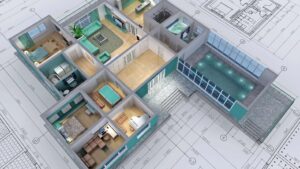Imagine being able to host the neighborhood block party in your custom BBQ area or planning a romantic dinner for two under the stars.
Only one issue stops you from dining al fresco, enjoying your morning cup of coffee in the sunshine, or watching your kids splash around in the backyard pool: You don’t have a backyard deck!
In addition to being a significant investment, a new deck increases the square footage of your living space while providing the ideal environment to bask in the California sunshine!

 Where to Start: Choosing the Right Deck Material
Where to Start: Choosing the Right Deck Material
The best place to start is with the basics: Choosing the suitable deck material for your budget, lifestyle, exterior aesthetics, and maintenance.
Check out our very comprehensive guide to choosing the best decking material for your Mountain View, CA, home, and why when it comes time to construct your cedar, wood composite, or redwood deck, a deck contractor from the best deck builders in the Bay Area, Clever Design & Remodeling, are your go-to source for materials and installation:
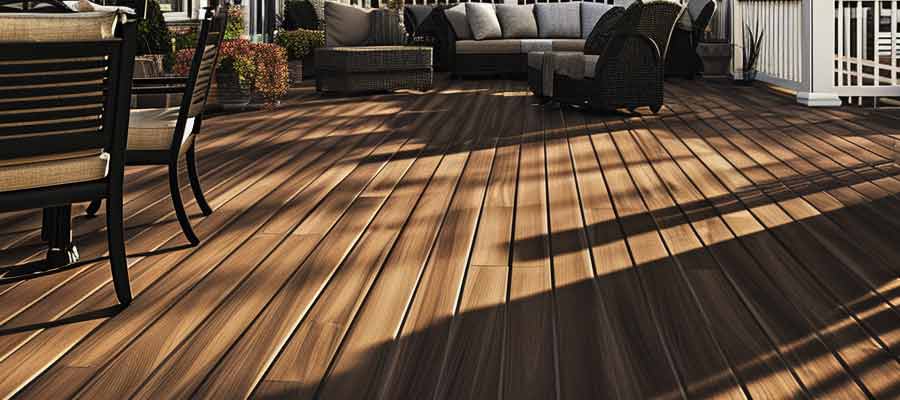
Shopping for Deck Builders and Materials: Consider These Factors for Your Dream Deck Project
Decks are a significant investment, and materials are one of the largest expenses. Checking out the possible candidates at your local home improvement store is a great place to start, but how do you narrow down your options?
How do you know the deck will be in good shape in 10 years, will be resistant to rot and damage, and will require less maintenance – Consider these factors before contacting a deck builder to begin the construction process:
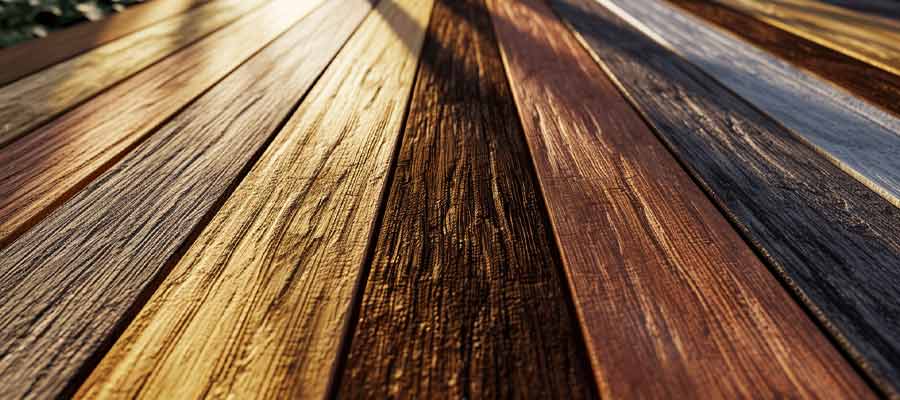
Regular Maintenance
Between lugging the kids to soccer practice, your long commute to work, and weekends dining and shopping with friends, you don’t have much time to maintain your deck.
Some decking materials are naturally low maintenance, while others require much more time, effort, and money to retain their natural beauty and prevent rot or severe damage.
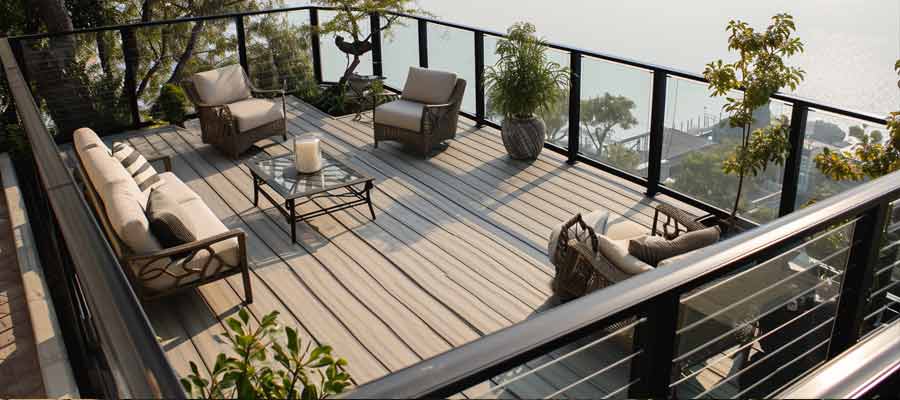
 Does The Deck Enhance My Outdoor Living Space?
Does The Deck Enhance My Outdoor Living Space?
Your Mountain View home is the talk of the neighborhood, and you would like to keep it that way. The color and finish of decking materials are just as important as the price, durability, and maintenance requirements.
Remember, although some materials are more cost-effective, their appearance might clash with the upscale look of your Bay Area property.
Conversely, if you have a modest home, there is such a thing as “over-improving” the property, so make sure to opt for materials that enhance your home’s look but don’t raise the value of your property well over comparable homes in the neighborhood.

Sustainability and Durability
Wood decks are great, but some of the more exotic hardwood species are expensive, and harvesting the wood can negatively impact the environment.
Consider not only the durability of the decking material but also the impact harvesting, manufacturing, and maintaining the deck can have on Mother Nature.
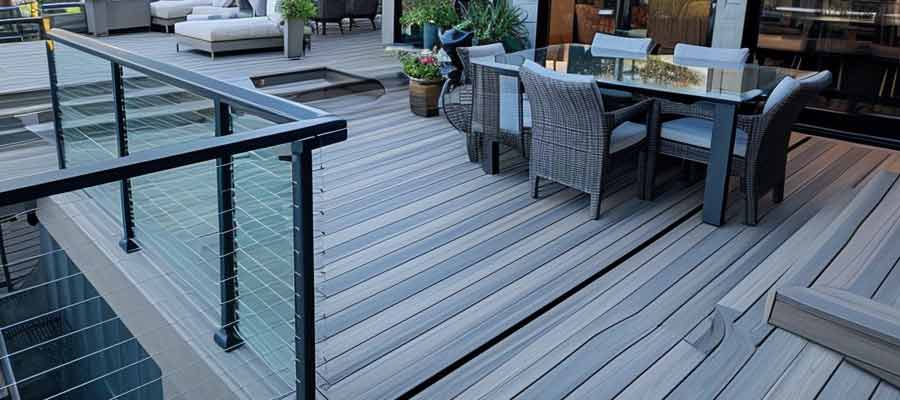
The Upfront Cost of Materials
Budget is a huge factor, and there are many different materials at drastically different price points. Even if your budget is limited, don’t despair!
The best general contractors in Mountain View, CA, Clever Design & Remodeling, can help you find the perfect durable, sustainable, beautiful material that won’t raddle your bank account.
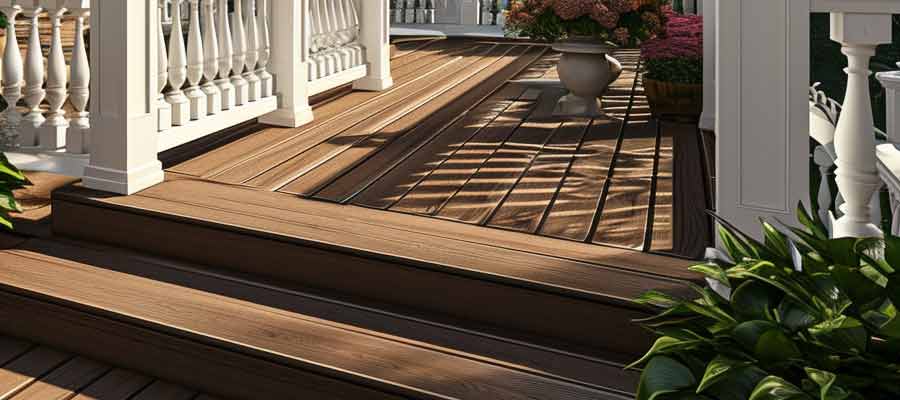
 Pros and Cons of Popular Mountain View, CA, Deck Materials
Pros and Cons of Popular Mountain View, CA, Deck Materials
You’ve considered every factor and are ready to improve your life and the look of your Mountain View property. Check out this definitive guide to popular decking material options and the pros and cons of each:
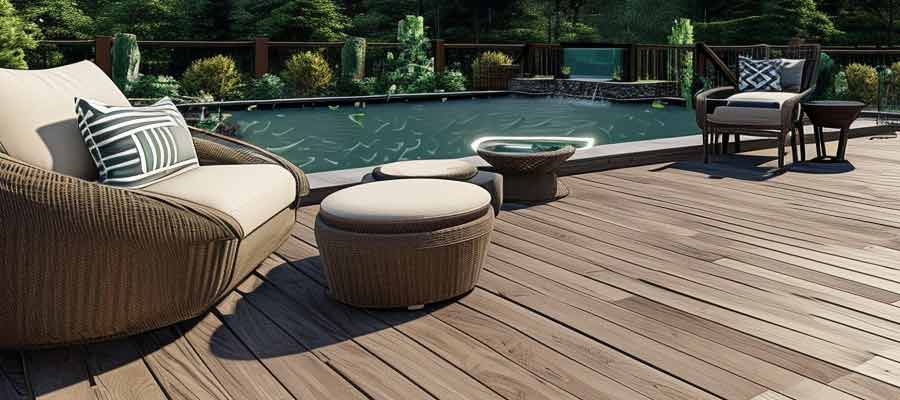
Natural Wood Deck
One of the premier go-to building materials for decades, wood decking, is beautiful. Still, comparable materials, namely composite decking, have a much lower initial cost of materials and installation, including two of the most popular options, cedar and bamboo.
Be aware that the price of natural wood decking can be enticing, but the love affair will wear off quickly when you realize the downsides of wood, including:
- The significant upkeep requirements and serious potential for damage.
- Wood decks require regular painting, staining, and repairs, exceptionally if you do not regularly clean and seal the deck, solid stains can become a real problem.
- Be prepared to repaint or stain your real wood decking at least every two to three years and make repairs, especially if your untreated deck is exposed to the elements and suffers from damage, mold, and rot.
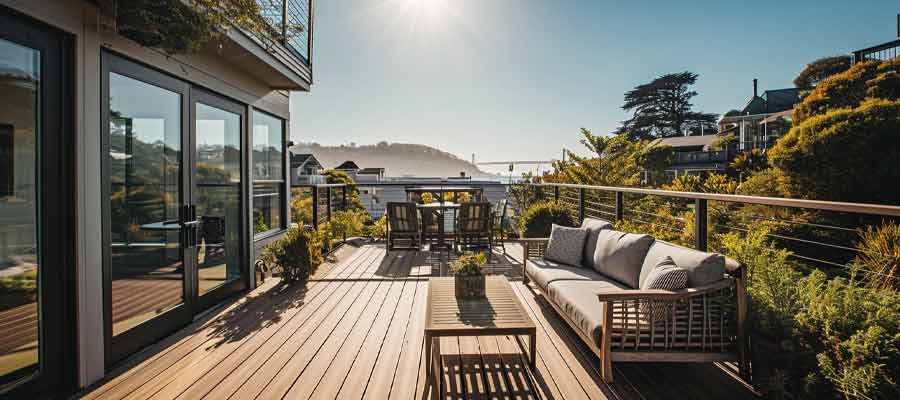
Exotic Hardwood and Redwood
Chances are you have never heard of some of the most popular types of exotic wood species used in backyard decks, including tigerwood, Garapa, and Cumaru!
Redwood is a more high-end option than cedar or pressure-treated wood, and although it is beautiful, you will still deal with several of the same downsides of other types of wood.
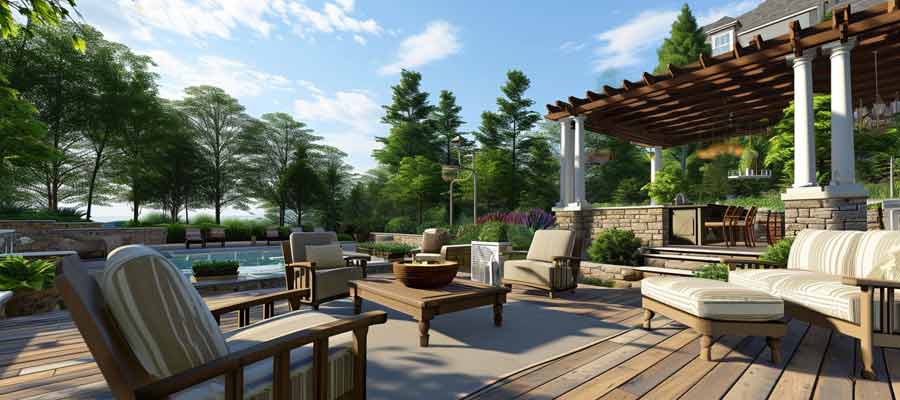
 High-Quality Composite Decking
High-Quality Composite Decking
Composite decking is a mixture of different plastic and wood fibers that will vary depending on the manufacturer and wood style.
On paper, composite decking seems like the obvious choice for many projects:
- The material is water-resistant, extremely durable, and requires minimal maintenance.
- Composite decking is available in an extensive variety of colors and styles that closely mimic the look of natural wood.
- Typically, it comes with a more extended warranty than other options.
Composite decking is also manufactured from recycled materials, making it one of the most environmentally friendly options.
Unfortunately, like other decking materials, there are cons to installing a composite deck, including:
- The initial investment.
- There is a high probability of scratches, dings, and dents, and the cost to repair the product.
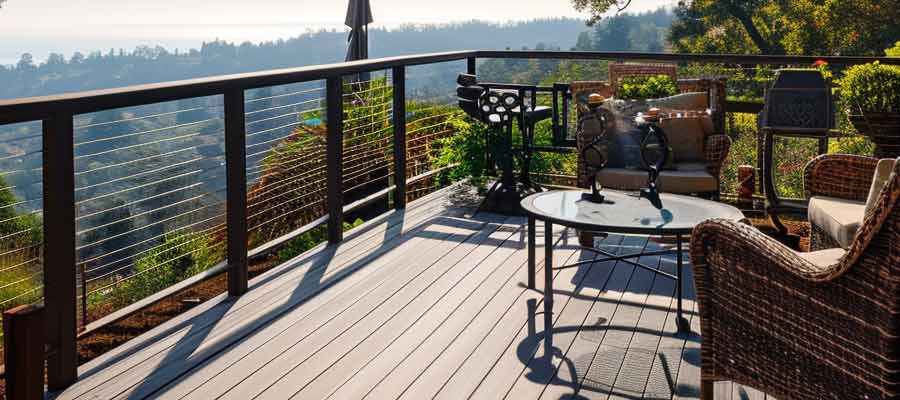
Aluminum Decking
A once common decking material, aluminum isn’t as widely used as the competition. Deck installers often do not recommend aluminum because the product doesn’t look natural, even if the goal is to mimic the look of wood, can be clunky, and is not a great option under the harsh California sunshine.
There are upsides to aluminum, including the product’s durability, low maintenance, and resistance to mold and mildew.
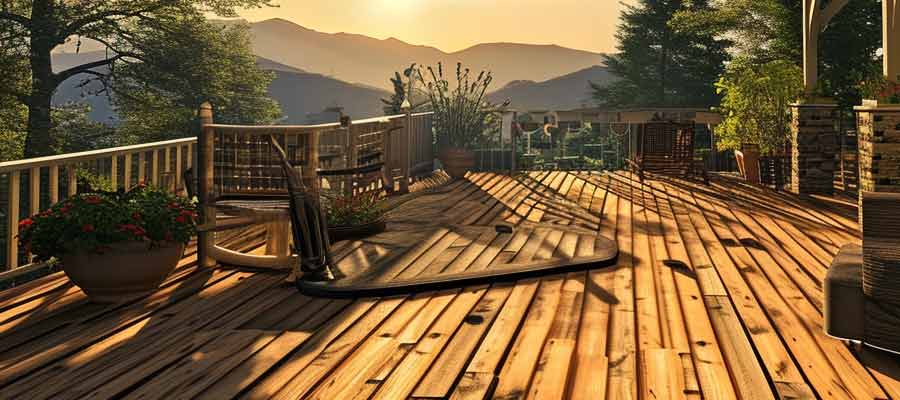
Pressure Treated Lumber
What is pressure-treated wood? It’s wood fortified with a chemical preservative and placed in a specialized chamber that replaces air trapped inside the wood with the preservative chemicals.
Pressure-treated decks, like other decking materials, have their ins and outs, including:
- Pressure-treated decking materials are affordable, durable, easy to repair, and easy to maintain, especially compared to untreated wood decks.
- This decking is prone to fading, splinters, and damage.
- Be aware that because the wood deck is chemically treated, if the wood burns or suffers severe damage, toxic chemicals can be released.
Considering pressure-treated decks, we provide comprehensive deck installation services.
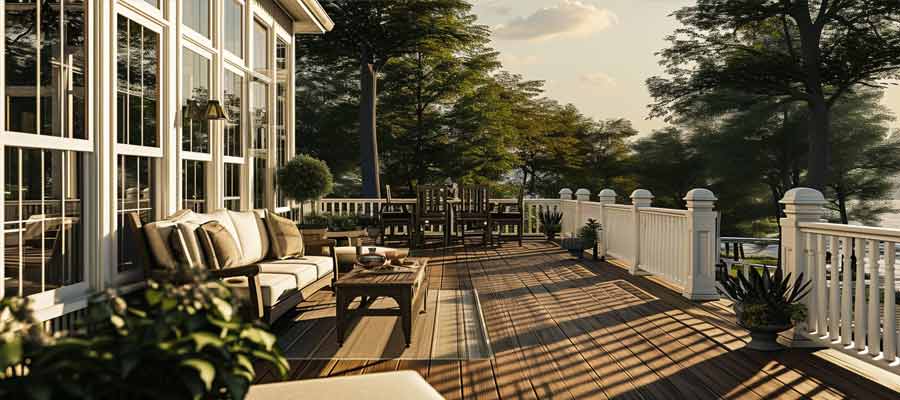
Homeowners Can Count on The Best Deck Builders in the Bay Area
At Clever Design, we are committed to customer satisfaction, which is why, in addition to the initial installation of a new deck, we ensure your deck is well maintained through regular repairs. Ready to get started? Contact the best home improvement contractors nearby!
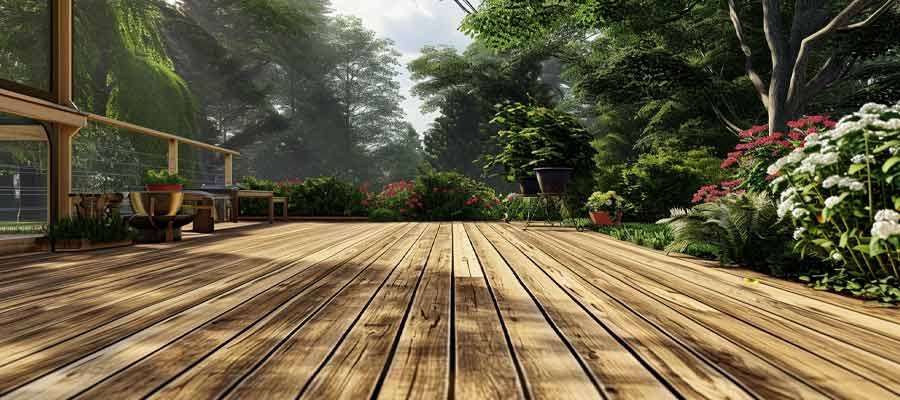
A Beautiful Deck or Patio to Increase Your Home’s Value
Decks are one of the most complicated home renovation projects. Still, the extra cash and hard work are worth it when you realize that new wood, aluminum, pressure-treated, cedar decks, or composite decks have a fantastic return on investment!
Remember, not all decking materials are created equally, so contact us, and a deck contractor will discuss your options.
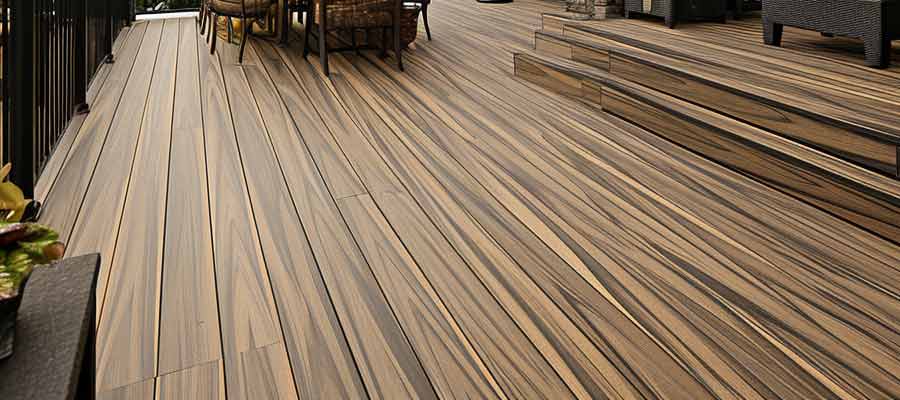
A Seamless Deck Installation and the Right Decking Materials
Our decking contractor will discuss your options and ensure that whatever decking solutions you ultimately choose, you are happy with your high-quality materials, both now and in the future.

 Our Customers Ask
Our Customers Ask
How do I choose the best decking material?
Choosing the best decking material for your outdoor space is an important decision that hinges on several key factors. It’s much like selecting the right outfit for a special occasion – you want something that looks great, feels comfortable, and suits the occasion perfectly. Let’s walk through the primary considerations to help you make an informed choice.
Climate Compatibility: First, consider the climate in your area. If your deck will face heavy rain, you might want to avoid certain types of wood that can warp or rot. Conversely, materials that resist heat absorption are preferable in hot, sunny climates.
Durability and Maintenance: How much time are you willing to invest in maintenance? Some materials, like natural wood, require regular staining and sealing, while composite decking offers a lower-maintenance alternative with a longer lifespan but a higher initial cost.
Aesthetics and Style: The look of your deck should complement your home’s architectural style and personal taste. Natural woods offer classic beauty, while composites and PVC materials come in various colors and textures.
Environmental Considerations: If sustainability is important to you, look for environmentally friendly decking materials. Some composites are made from recycled materials, and certain woods are sustainably sourced.
Budget: Of course, cost is always a consideration. While natural wood can be less expensive upfront, the long-term maintenance costs can add up. Composite decks may cost more initially but typically require less maintenance over time.
Safety: Ensure the material you choose is slip-resistant, especially if your deck will be around a pool or in a wet climate.
Installation: Some decking materials are easier to install than others. If you’re planning a DIY project, you might prefer a more user-friendly material.
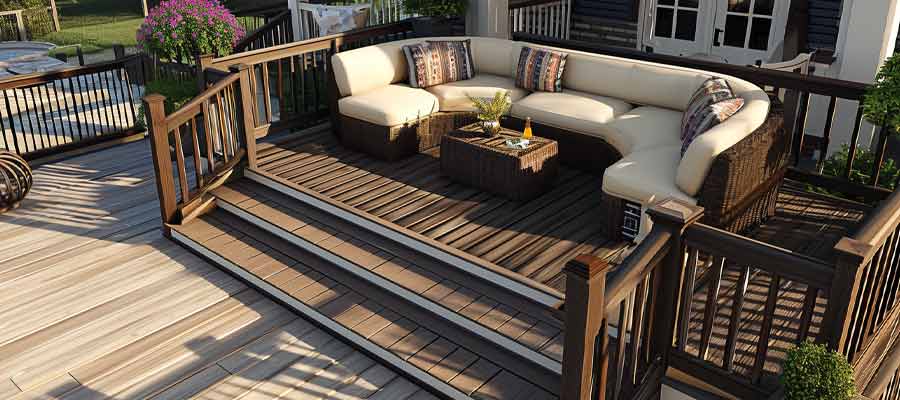
 What is the best wood for a deck in the mountains?
What is the best wood for a deck in the mountains?
The high altitudes and mountainous terrain pose their own unique set of challenges, including:
- Exposure to UV rays: The mountains are closer to the sun, meaning a higher exposure to natural sunlight and the damage caused by harmful UV radiation.
- Even though you live in California, living in the higher elevations of certain areas means you might experience snowfall, which can wreak havoc on untreated wood decks.
- Expansion and contraction due to constant temperature fluctuations.
All things considered, the best decking material for a higher-elevation property is composite decking, which, because it is manufactured from a combination of plastics and wood, provides superior protection against the elements and is less likely to fade under intense sunlight.
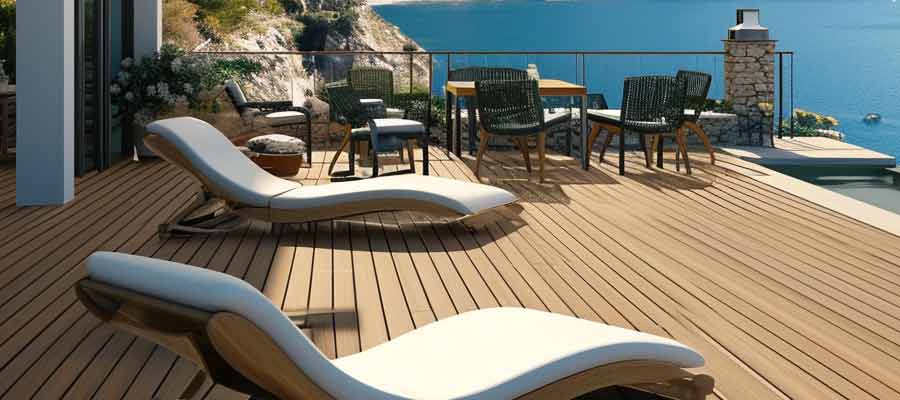
How do I find a good deck builder?
A great place to start is by searching “deck installers nearby” and finding a professional with a wide variety of credentials and qualities, including:
- Years of experience: Look for builders with years of verifiable experience serving not only their customers but also making a positive impact in their community.
- A commitment to excellence and quality: Search for builders committed to customer satisfaction and ensuring their materials are of the highest quality.
- Affordable pricing: Work with a team that wants to ensure that your decking project remains on budget and does not try to sell you more expensive materials than you can afford.
- Transparency and communication: Your decking contractors should remain in constant contact and remain completely open and transparent about your project’s costs and timeline.


 Where to Start: Choosing the Right Deck Material
Where to Start: Choosing the Right Deck Material Does The Deck Enhance My Outdoor Living Space?
Does The Deck Enhance My Outdoor Living Space? Pros and Cons of Popular Mountain View, CA, Deck Materials
Pros and Cons of Popular Mountain View, CA, Deck Materials High-Quality Composite Decking
High-Quality Composite Decking Our Customers Ask
Our Customers Ask What is the best wood for a deck in the mountains?
What is the best wood for a deck in the mountains?
